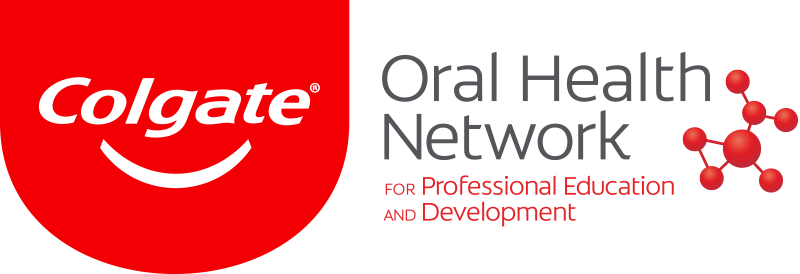CHICAGO, US: A recent survey conducted by the American Dental Association (ADA) investigated the prevalence, applications and user experience of 3D printing in dentistry. It found that, although the use of 3D printing in dental practice is currently low, those who adopted it reported improved efficiency and reduced cost. The aim of the study is to inform current users about other users’ experiences and to advise non-users about the potential benefits of the technology.
The survey report considered the responses of 277 members of the ADA Clinical Evaluators Panel. It found that only 17% of the participating dentists currently use a 3D printer in their practice, of which 67% have been using it for less than two years.
“Although this survey found that 3D printer use in private practices is currently low, it is growing due to workflow efficiencies and expanded applications associated with continuing developments and progress with these technologies,” co-authors Dr Kevin Frazier, vice dean and professor of restorative sciences at the Dental College of Georgia at Augusta University in the US, and Dr Marta Revilla-León, director of research and digital dentistry at the Kois Center in the US, said in a press release. “Non-users should continue to monitor these trends for adding 3D printing in their own practices.”
The most common uses for a 3D printer were to complement or enhance other digital technologies, control workflows, improve efficiency, use existing digital skills or procedures, and reduce cost or manufacturing time.
Regarding usage, nearly half of the users said that they use a 3D printer for 25% of their cases per month, mainly for diagnostic models (62%), followed by splints and occlusal devices (50%) and then surgical guides (48%). The most common problems experienced with 3D printing involved software and printing failure.
Among the 83% respondents who do not use 3D printers, 44% cited using a laboratory, 39% high financial investment and 34% lack of perceived benefit as their reasons for not using 3D printing. Among non-users, 21% were considering investing in a 3D printer and 35% were considering undergoing training.
“3D printing was chosen for this survey because it was one of the top four topics on several ‘hot’ or ‘emerging’ trends in dentistry lists, and we wanted to know how our colleagues were responding to the advances in 3D-printing technology that have led to expanded applications for practice,” Drs Frazier and Revilla-León noted.
The report can be found here.
Tags:
I think we can agree that dentistry is not the most environmentally friendly profession. Just take into consideration the number of single-use materials ...
HONG KONG: CAD/CAM technology has greatly improved the productivity of dental prostheses but still has its drawbacks when it comes to the design of crowns....
BOSTON, US/KARAJ, Iran: The introduction of 3D printing in medicine has improved outcomes across surgical applications by decreasing costs, reducing ...
During IDS 2023, Dental Tribune International talked to Niels Plate, group vice president of digital devices and equipment at Dentsply Sirona, about the ...
DAMMAM, Saudi Arabia: The method of denture fabrication and material used are relevant to longevity, strength and occlusal wear resistance. 3D-printing ...
LOS ANGELES, US/WEITERSTADT, Germany: With a focus on dental 3D printing, SprintRay is continuously developing its technology and products to deliver its ...
BOULDER, US: After raising an astounding US$1.3 million (€1.24 million) in a seed funding round, Vitro3D will take its place as a commercial rival in ...
Live webinar
Tue. 6 August 2024
6:00 PM EST (New York)
Live webinar
Tue. 6 August 2024
8:00 PM EST (New York)
Dr. Cameron Shahbazian DMD MBA
Live webinar
Tue. 13 August 2024
7:00 PM EST (New York)
Live webinar
Wed. 14 August 2024
12:30 PM EST (New York)
Live webinar
Wed. 21 August 2024
9:00 AM EST (New York)
Dr. Jim Lai DMD, MSc(Perio), EdD, FRCD(C)
Live webinar
Thu. 22 August 2024
4:00 PM EST (New York)
Live webinar
Wed. 28 August 2024
8:00 PM EST (New York)



 Austria / Österreich
Austria / Österreich
 Bosnia and Herzegovina / Босна и Херцеговина
Bosnia and Herzegovina / Босна и Херцеговина
 Bulgaria / България
Bulgaria / България
 Croatia / Hrvatska
Croatia / Hrvatska
 Czech Republic & Slovakia / Česká republika & Slovensko
Czech Republic & Slovakia / Česká republika & Slovensko
 France / France
France / France
 Germany / Deutschland
Germany / Deutschland
 Greece / ΕΛΛΑΔΑ
Greece / ΕΛΛΑΔΑ
 Italy / Italia
Italy / Italia
 Netherlands / Nederland
Netherlands / Nederland
 Nordic / Nordic
Nordic / Nordic
 Poland / Polska
Poland / Polska
 Portugal / Portugal
Portugal / Portugal
 Romania & Moldova / România & Moldova
Romania & Moldova / România & Moldova
 Slovenia / Slovenija
Slovenia / Slovenija
 Serbia & Montenegro / Србија и Црна Гора
Serbia & Montenegro / Србија и Црна Гора
 Spain / España
Spain / España
 Switzerland / Schweiz
Switzerland / Schweiz
 Turkey / Türkiye
Turkey / Türkiye
 UK & Ireland / UK & Ireland
UK & Ireland / UK & Ireland
 International / International
International / International
 Brazil / Brasil
Brazil / Brasil
 Canada / Canada
Canada / Canada
 Latin America / Latinoamérica
Latin America / Latinoamérica
 China / 中国
China / 中国
 India / भारत गणराज्य
India / भारत गणराज्य
 Japan / 日本
Japan / 日本
 Pakistan / Pākistān
Pakistan / Pākistān
 Vietnam / Việt Nam
Vietnam / Việt Nam
 ASEAN / ASEAN
ASEAN / ASEAN
 Israel / מְדִינַת יִשְׂרָאֵל
Israel / מְדִינַת יִשְׂרָאֵל
 Algeria, Morocco & Tunisia / الجزائر والمغرب وتونس
Algeria, Morocco & Tunisia / الجزائر والمغرب وتونس
 Middle East / Middle East
Middle East / Middle East
:sharpen(level=0):output(format=jpeg)/up/dt/2024/07/Study-evaluates-primary-personality-types-among-dental-students.jpg)
:sharpen(level=0):output(format=jpeg)/up/dt/2024/07/Shutterstock_2330040761.jpg)
:sharpen(level=0):output(format=jpeg)/up/dt/2024/07/Our-commitment-to-digital-dentistry-is-a-cornerstone-of-our-strategy.jpg)
:sharpen(level=0):output(format=jpeg)/up/dt/2024/07/University-teams-line-up-for-Dental-Olympics-2024.jpg)
:sharpen(level=0):output(format=jpeg)/up/dt/2024/07/website_Schein.jpg)








:sharpen(level=0):output(format=png)/up/dt/2011/11/ITI-LOGO.png)
:sharpen(level=0):output(format=png)/up/dt/2014/02/Du%CC%88rr_Dental.png)
:sharpen(level=0):output(format=png)/up/dt/2022/06/RS_logo-2024.png)
:sharpen(level=0):output(format=png)/up/dt/2022/01/Straumann_Logo_neu-.png)
:sharpen(level=0):output(format=jpeg)/up/dt/2010/02/logo-3DISC-et-baseline-fond-blanc.jpg)
:sharpen(level=0):output(format=png)/up/dt/2013/04/Dentsply-Sirona.png)
:sharpen(level=0):output(format=jpeg)/up/dt/e-papers/330729/1.jpg)
:sharpen(level=0):output(format=jpeg)/up/dt/e-papers/330727/1.jpg)
:sharpen(level=0):output(format=jpeg)/up/dt/e-papers/330725/1.jpg)
:sharpen(level=0):output(format=jpeg)/up/dt/e-papers/339526/1.jpg)
:sharpen(level=0):output(format=jpeg)/up/dt/e-papers/339524/1.jpg)
:sharpen(level=0):output(format=jpeg)/up/dt/e-papers/325039/1.jpg)
:sharpen(level=0):output(format=jpeg)/up/dt/2023/05/New-study-investigates-3D-printing-use-in-dental-practice.jpg)

:sharpen(level=0):output(format=jpeg)/up/dt/2024/07/Study-evaluates-primary-personality-types-among-dental-students.jpg)
:sharpen(level=0):output(format=jpeg)/up/dt/2024/03/profile-image-300x300.jpg)
:sharpen(level=0):output(format=jpeg)/up/dt/2023/05/Is-digital-dentistry-the-solution-to-the-sustainability-dilemma.jpg)
:sharpen(level=0):output(format=jpeg)/up/dt/2023/05/Researchers-use-generative-artificial-intelligence-to-design-realistic-dental-crowns.jpg)
:sharpen(level=0):output(format=jpeg)/up/dt/2023/05/A-new-guide-gives-clinicians-overview-of-3D-printing-applications-in-oral-and-maxillofacial-surgery.jpg)
:sharpen(level=0):output(format=jpeg)/up/dt/2023/04/Digital-workflow-for-dental-offices-and-laboratories_Niels-Plate_Dentsply-Sirona.jpg)
:sharpen(level=0):output(format=jpeg)/up/dt/2023/02/3D-printed-denture-teeth-suitable-for-long-term-clinical-use-.jpg)
:sharpen(level=0):output(format=jpeg)/up/dt/2023/02/ARTICL2.jpg)
:sharpen(level=0):output(format=jpeg)/up/dt/2023/01/3D-printing-start-up-promises-100-fold-reduction-in-print-times.jpg)






:sharpen(level=0):output(format=jpeg)/up/dt/2024/07/Study-evaluates-primary-personality-types-among-dental-students.jpg)
:sharpen(level=0):output(format=jpeg)/up/dt/2024/07/Shutterstock_2330040761.jpg)
:sharpen(level=0):output(format=jpeg)/up/dt/2024/07/Our-commitment-to-digital-dentistry-is-a-cornerstone-of-our-strategy.jpg)
:sharpen(level=0):output(format=jpeg)/up/dt/e-papers/330727/1.jpg)
:sharpen(level=0):output(format=jpeg)/up/dt/e-papers/330725/1.jpg)
:sharpen(level=0):output(format=jpeg)/up/dt/e-papers/339526/1.jpg)
:sharpen(level=0):output(format=jpeg)/up/dt/e-papers/339524/1.jpg)
:sharpen(level=0):output(format=jpeg)/up/dt/e-papers/325039/1.jpg)
:sharpen(level=0):output(format=jpeg)/up/dt/e-papers/330729/1.jpg)
:sharpen(level=0):output(format=jpeg)/up/dt/e-papers/330729/2.jpg)
:sharpen(level=0):output(format=jpeg)/wp-content/themes/dt/images/3dprinting-banner.jpg)
:sharpen(level=0):output(format=jpeg)/wp-content/themes/dt/images/aligners-banner.jpg)
:sharpen(level=0):output(format=jpeg)/wp-content/themes/dt/images/covid-banner.jpg)
:sharpen(level=0):output(format=jpeg)/wp-content/themes/dt/images/roots-banner-2024.jpg)
To post a reply please login or register